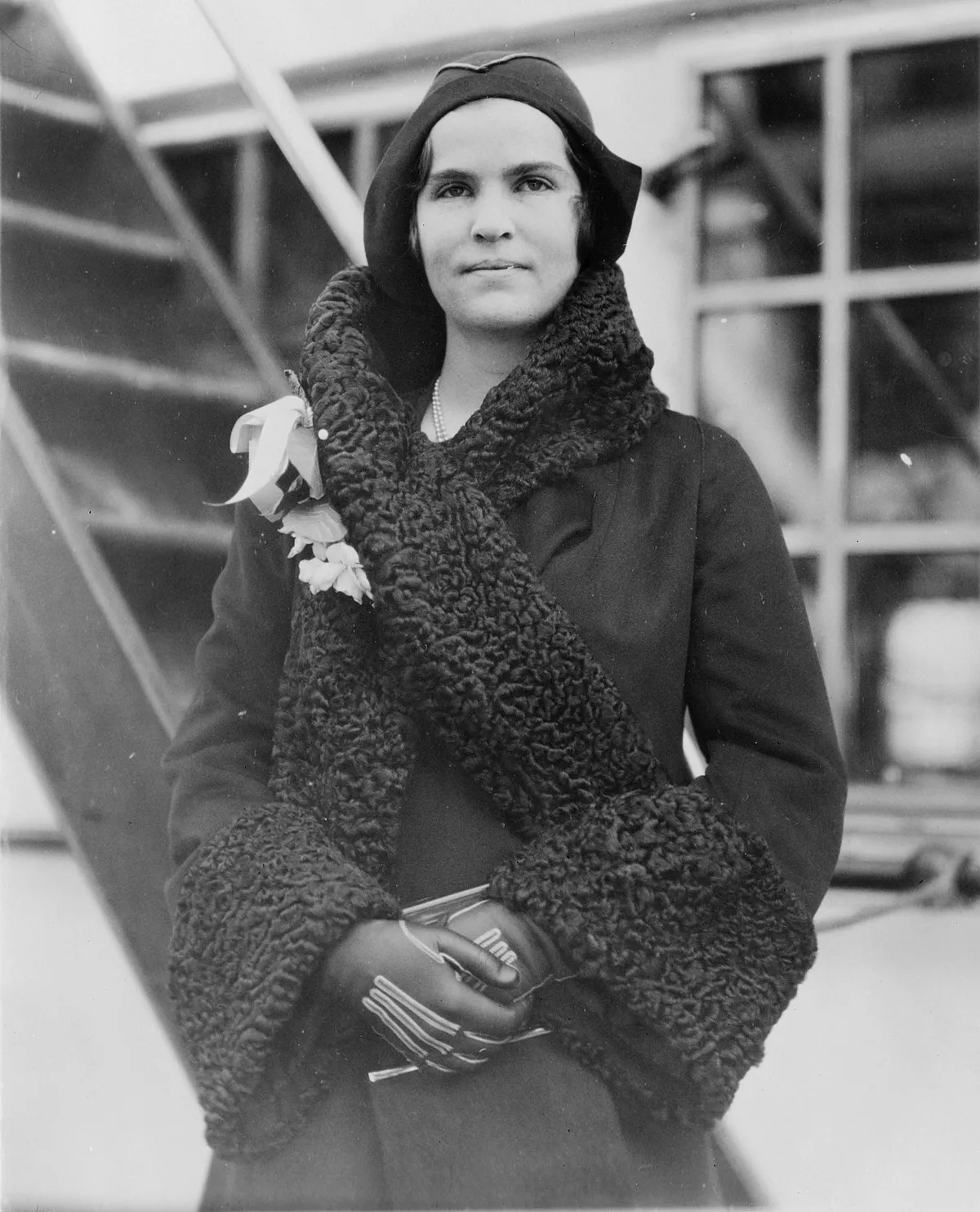
100 years ago, children diagnosed with what was then known as ‘juvenile’ diabetes would not be expected to live longer than a couple of years. One such child was Elizabeth Evans Hughes who, at age 14, became one of the first patients to be treated with insulin.
Elizabeth Evans Hughes
Elizabeth Evans Hughes was born in New York of Welsh descent, her grandfather having emigrated to the USA from Tredegar. Her father, Charles Evans Hughes, became a distinguished member of American society, and would go on to be a presidential candidate, Secretary of State and one Chief Justice of the Supreme Court.
Elizabeth was a bright child, who loved reading. She was diagnosed with type 1 diabetes in 1918, at the age of 11. By the time she was treated she had already defied the odds, surviving for three years instead of the expected two.
This was largely thanks to a strict diet regime prescribed by leading diabetes specialist of the time, Frederick Allen, which recommended Elizabeth sometimes have as little as 400 calories a day. Remarkably, Elizabeth was able to stick to this regime, demonstrating her strength of will and absolute determination that a breakthrough would be found.
The discovery that changed everything
By the end of 1921, Elizabeth’s health was getting worse, and her family sent her and her nurse to Bermuda in the hope that the warmer climate would help. Six months later, she returned to Washington in an emaciated state.
By this time, her parents had heard news of the breakthrough Elizabeth had been so determined to hold out for. Insulin had been discovered by Dr Frederick Banting, a Canadian surgeon.
On hearing of Banting and his team’s research, Elizabeth’s parents wrote to him in desperation, asking them to treat their daughter. On 15 August 1922, in Banting’s office in Toronto, Elizabeth became one of the first people to be injected with insulin.
The effects were amazing. Elizabeth flourished, gaining weight, brimming with energy and growing taller. Elizabeth stayed in Toronto for three months, making excellent progress and developing a close relationship with Banting, who included her case in medical journals and stayed in contact once she returned home to Washington.
For Elizabeth, insulin was liberating, enabling her to travel widely and live a full and happy life. She married William Gossett in 1930 and had three children, Antoinette, Elizabeth and William Thomas. She travelled extensively, something she had always dreamed of as an unwell child, continued her passion for reading and sat on the board of several colleges. In 1972 she founded the Supreme Court of the United State Historical Society, and was its president until 1979.
"Too wonderful for words"
Elizabeth received insulin therapy for nearly 60 years, taking an estimated 43,000 insulin injections in that time. She died in 1981 at the age of 73.
Elizabeth found insulin liberating, writing in her diary, “Oh, it is simply too wonderful for words, this stuff”. However, it was by no means a cure. Her condition still required the constant, demanding management it does today, and without the convenience of disposable syringes and technological advancements like continuous glucose monitors and insulin pumps, developments many people living with type 1 today benefit from.
She kept her condition a secret, never discussing it publicly, and only consenting to be featured in a book about the discovery of insulin under an alias. She died believing that very few of her friends knew of her condition, and even her own children were unaware of her condition until they were 18 years old. Many people living with type 1 today still experience feelings of shame, stigma and misunderstanding surrounding their condition.
Insulin undoubtedly allowed Elizabeth to flourish, to reach her potential and to see many more years of life, something we at Diabetes UK continue to celebrate, especially this year, 100 years since its discovery.
We are particularly proud of Elizabeth’s remarkable story here in Wales, where the Elizabeth Evans Hughes Insulin Medal is presented to anyone who has lived with diabetes for 50 years or more and has their own connection to Wales. First presented in 1995, the medals lay dormant for a number of years until, in 2020, Diabetes UK Cymru revived the initiative at a special celebration at the Senedd in Cardiff to celebrate the achievements of children and young people living with type 1 diabetes. We were honoured that Elizabeth’s youngest grandson, Professor David Denning, now a Professor of Infectious Diseases at Manchester University, and his wife Merien, joined us to present his grandmother’s medal to a group of very special children and young people, who have refused to let type 1 diabetes limit their success and inspired others to follow their path. Professor Denning said: "I would not be here today, had it not been for the pioneering research by Dr Fred Banting In the 1920s."
Insulin is a part of daily life for people living with type 1 diabetes, but it is never taken for granted. One hundred years ago, it transformed a young girl’s life and enabled her to fulfil her dreams. Today is no different, and we are honoured to have revived Elizabeth’s story and medal, and pass both on to future generations.
